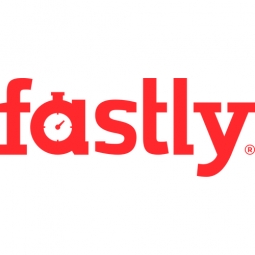Technology Category
- Analytics & Modeling - Machine Learning
- Platform as a Service (PaaS) - Application Development Platforms
Applicable Industries
- Cement
- Equipment & Machinery
Applicable Functions
- Product Research & Development
Use Cases
- Edge Computing & Edge Intelligence
- Fog Computing
Services
- System Integration
- Testing & Certification
About The Customer
Andrew Barba is an engineer and iOS developer who has a deep understanding and love for Swift, a programming language developed by Apple and the open-source community. He started his career as an iOS developer and adopted Swift early on, appreciating its safety and performance. However, his career took a different path towards the backend, and he found himself writing a lot of JavaScript on Node.js. Despite this, his passion for Swift remained, and he sought a way to run Swift on servers. Barba is a problem-solver who is not afraid to tackle complex challenges. He is also a believer in the potential of edge computing and sees opportunities for new use cases in this area.
The Challenge
Andrew Barba, an engineer and iOS developer, was faced with the challenge of running Swift, a programming language developed by Apple and the open-source community, on servers. Despite the popularity of Swift in the Apple ecosystem, there was no clear pathway for its use on servers. The Swift community had been laying the groundwork for this, including adding support for compiling code to WebAssembly, but there was little traction. Barba found the development experience of writing JavaScript on Node.js to be lacking compared to building native applications in Swift. He also found the process of getting Swift packages into AWS to be too complex, requiring extensive knowledge about cloud architecture and Docker files.
The Solution
Barba decided to write a Swift runtime for Compute@Edge to decrease the barrier to entry for the iOS developer community to run Swift on the server. He was inspired by the work of the Swift Wasm team, which allowed Swift to compile to WebAssembly. His solution was to implement the entire runtime spec, removing any obstacles between the compiler and the platform. Barba chose Compute@Edge for his project because it allowed for direct integration with Swift. Fastly, the company behind Compute@Edge, exposes the platform’s core system hostcalls, which resulted in fewer layers of abstraction and much smaller packages. Barba believes that edge computing is evolving and that developers want fine-grained control of caching. He also sees potential for new use cases at the edge, such as image optimization and machine learning.
Operational Impact

Case Study missing?
Start adding your own!
Register with your work email and create a new case study profile for your business.
Related Case Studies.

Case Study
Smart Water Filtration Systems
Before working with Ayla Networks, Ozner was already using cloud connectivity to identify and solve water-filtration system malfunctions as well as to monitor filter cartridges for replacements.But, in June 2015, Ozner executives talked with Ayla about how the company might further improve its water systems with IoT technology. They liked what they heard from Ayla, but the executives needed to be sure that Ayla’s Agile IoT Platform provided the security and reliability Ozner required.

Case Study
IoT enabled Fleet Management with MindSphere
In view of growing competition, Gämmerler had a strong need to remain competitive via process optimization, reliability and gentle handling of printed products, even at highest press speeds. In addition, a digitalization initiative also included developing a key differentiation via data-driven services offers.

Case Study
Predictive Maintenance for Industrial Chillers
For global leaders in the industrial chiller manufacturing, reliability of the entire production process is of the utmost importance. Chillers are refrigeration systems that produce ice water to provide cooling for a process or industrial application. One of those leaders sought a way to respond to asset performance issues, even before they occur. The intelligence to guarantee maximum reliability of cooling devices is embedded (pre-alarming). A pre-alarming phase means that the cooling device still works, but symptoms may appear, telling manufacturers that a failure is likely to occur in the near future. Chillers who are not internet connected at that moment, provide little insight in this pre-alarming phase.

Case Study
Premium Appliance Producer Innovates with Internet of Everything
Sub-Zero faced the largest product launch in the company’s history:It wanted to launch 60 new products as scheduled while simultaneously opening a new “greenfield” production facility, yet still adhering to stringent quality requirements and manage issues from new supply-chain partners. A the same time, it wanted to increase staff productivity time and collaboration while reducing travel and costs.

Case Study
System 800xA at Indian Cement Plants
Chettinad Cement recognized that further efficiencies could be achieved in its cement manufacturing process. It looked to investing in comprehensive operational and control technologies to manage and derive productivity and energy efficiency gains from the assets on Line 2, their second plant in India.

Case Study
Integration of PLC with IoT for Bosch Rexroth
The application arises from the need to monitor and anticipate the problems of one or more machines managed by a PLC. These problems, often resulting from the accumulation over time of small discrepancies, require, when they occur, ex post technical operations maintenance.



